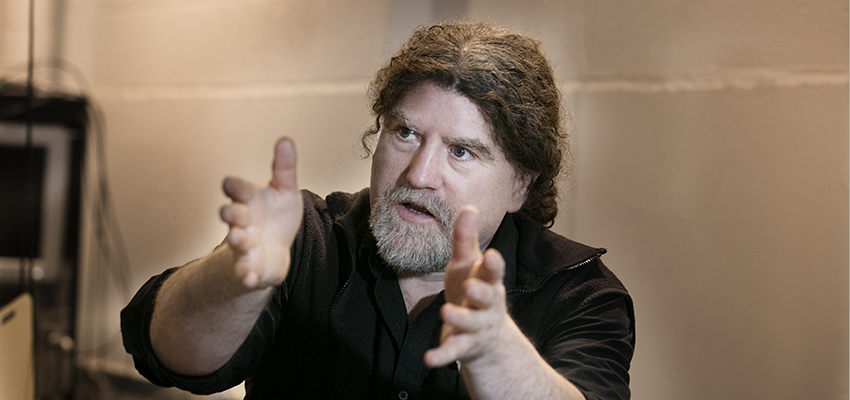
HWS News
18 October 2019 • Faculty • Research Penn Elected Chair of LIGO Scientific Collaboration
This month, Professor of Physics Steven Penn was elected Chair of the LIGO Scientific Collaboration (LSC), an international group of more than 1,300 researchers focused on the direct detection of gravitational waves as a means to explore the fundamental physics of gravity and to advance astronomical discovery.
A longtime LSC member and principal investigator, Penn has made significant contributions to the optical and suspension systems of the LIGO (Laser Interferometer Gravitational-Wave Observatory) detectors. On Sept. 14, 2015, LIGO scientists made the first direct detection of gravitational waves. This first event was generated by the inspiral and coalescence of a binary black hole (BBH) system. The energy released in this cataclysmic event, during the brief moment of coalescence, was 50 times greater than the total energy from all the stars in the universe. Since that first event, LIGO has detected dozens of BBH events, and the catalogue of these newly discovered black holes is revolutionizing the understanding of black hole populations.
In August 2017, LIGO began coordinating its observations with Virgo, a similar gravitational wave detector located near Pisa. On Aug. 17, 2017, LIGO & Virgo detected the first binary neutron star (BNS) inspiral event. Since neutron stars are made of matter, the energy from this star collision was seen in the electromagnetic spectrum from gamma rays to visible light and radio waves. This event has become the most observed event in the history of astronomy. In addition to confirming Einstein’s general theory of relativity, this event also proved that gravitational waves travel at the speed of light.
In early 2017, the LIGO Scientific Collaboration was awarded the Special Breakthrough Prize in Physics, often considered the modern Nobel prize. In the fall 2017, three founders of the LIGO project, Rai Weiss, Kip Thorne and Barry Barish, were awarded the Nobel Prize in Physics for the detection of gravitational waves, a scientific breakthrough made possible by the decades-long effort of the LIGO Scientific Collaboration.
In the LSC organizational structure, which Penn says is akin to parliamentary body, the position of Chair corresponds to the Speaker of Parliament, a central role in the management and execution of the group’s mission and goals. The LSC spokesperson is the position that, like the Prime Minister, is the leader of the collaboration.
Through his work with the LSC, Penn has been a significant contributor to the mirror substrate and coating design for LIGO detectors. He discovered how to significantly reduce the thermal noise in the material fused silica, which led to the selection of fused silica for the Advanced LIGO mirror substrates and suspensions. He also jointly developed the mirror coating that was instrumental in enabling Advanced LIGO to detect gravitational waves. Now, Penn and a few dozen collaborators are attempting to develop a new mirror coating, which will allow LIGO and Virgo to detect BBH and BNS events anywhere in the universe.
An MIT-trained physicist, Penn joined the LSC in 1998 while a postdoctoral fellow at Syracuse University. Hobart and William Smith became one of the first small colleges to join the LSC when Penn took a position in the Physics Department in 2002. Penn previously chaired the LSC Coating Working Group, a subcommittee of the Optics Working Group, which is developing coatings for future detectors.
In early 2017, he was among those involved with the LIGO research who were awarded a “Breakthrough Prize: Scientists Changing the World” medal lauding the landmark research.

